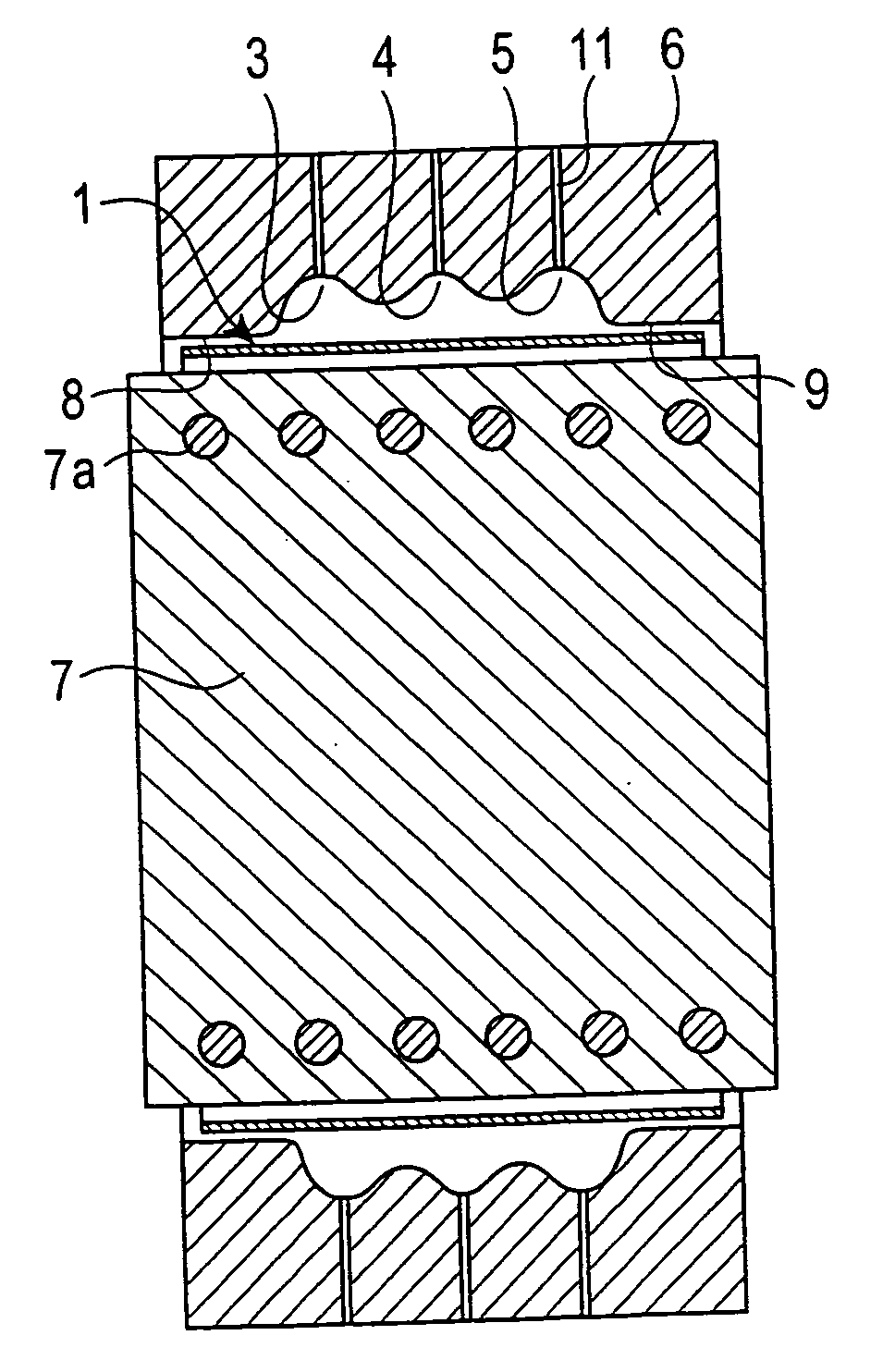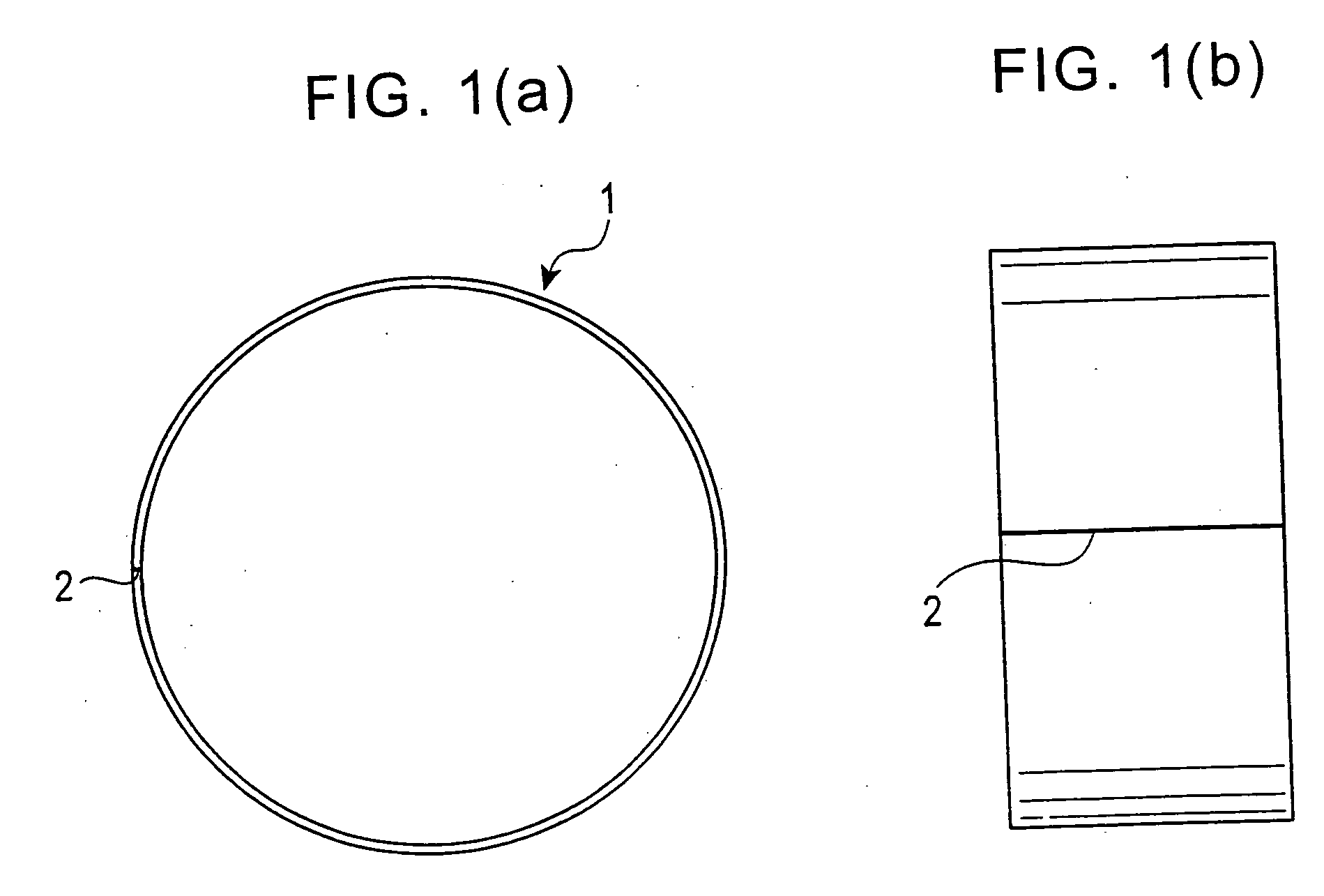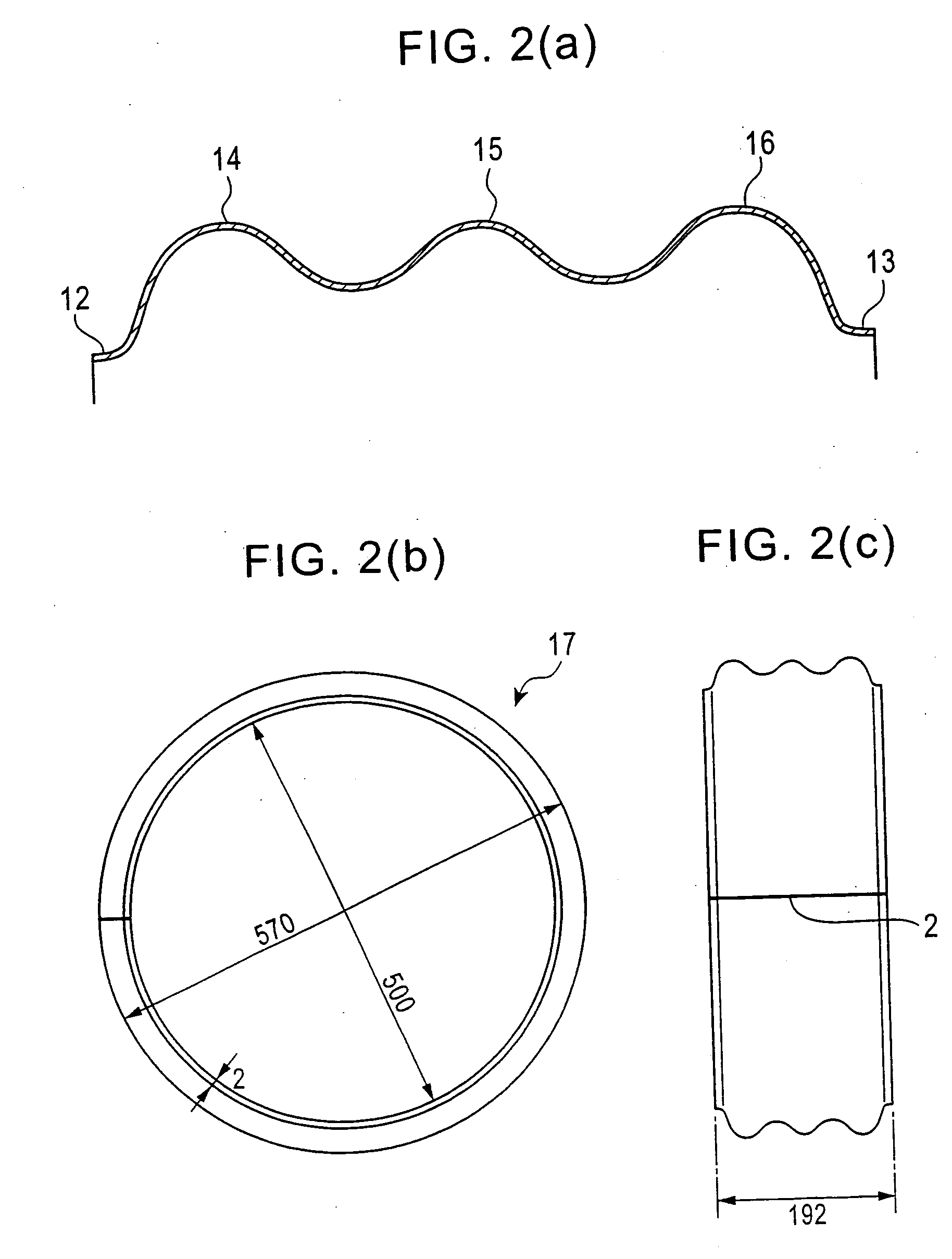Process for producing tubular ring with beads and die for use therein
a technology of tubular rings and beads, which is applied in the direction of manufacturing tools, forging/pressing/hammering apparatuses, forging presses, etc., can solve the problems of insufficient product dimensional accuracy and inability to increase productivity, and achieve the effect of more uniform molding
- Summary
- Abstract
- Description
- Claims
- Application Information
AI Technical Summary
Benefits of technology
Problems solved by technology
Method used
Image
Examples
example
[0125] A base ring similar to that shown in FIG. 1 was molded from a plate of an aluminum alloy, and a cylindrical ring with beads was produced by molding the base ring by electromagnetic forming.
[0126] The aluminum-alloy plate as a raw material was an extruded plate (type 6061-F). The plate was formed into a cylinder by roll-bending using three rolls such that the extruding direction corresponded to the feeding direction of the roll-bending, and the ends were butt-welded (the connecting portion was parallel to the central axis direction of the ring). The cylindrical ring had a thickness of 2.2 mm, an internal diameter of 494 mm, and a width of 222 mm in the axial direction. For welding, laser welding and MIG welding were performed. The laser welding was performed under a condition with a power of 40 kW, a speed of 3 m / min, a wire A5356WY with a diameter of 1.2 mm, a feeding speed of 4 m / min, and an atmospheric gas of 100% argon supplied at 25 l / min. The MIG welding was performed u...
PUM
 Login to View More
Login to View More Abstract
Description
Claims
Application Information
 Login to View More
Login to View More - R&D
- Intellectual Property
- Life Sciences
- Materials
- Tech Scout
- Unparalleled Data Quality
- Higher Quality Content
- 60% Fewer Hallucinations
Browse by: Latest US Patents, China's latest patents, Technical Efficacy Thesaurus, Application Domain, Technology Topic, Popular Technical Reports.
© 2025 PatSnap. All rights reserved.Legal|Privacy policy|Modern Slavery Act Transparency Statement|Sitemap|About US| Contact US: help@patsnap.com



